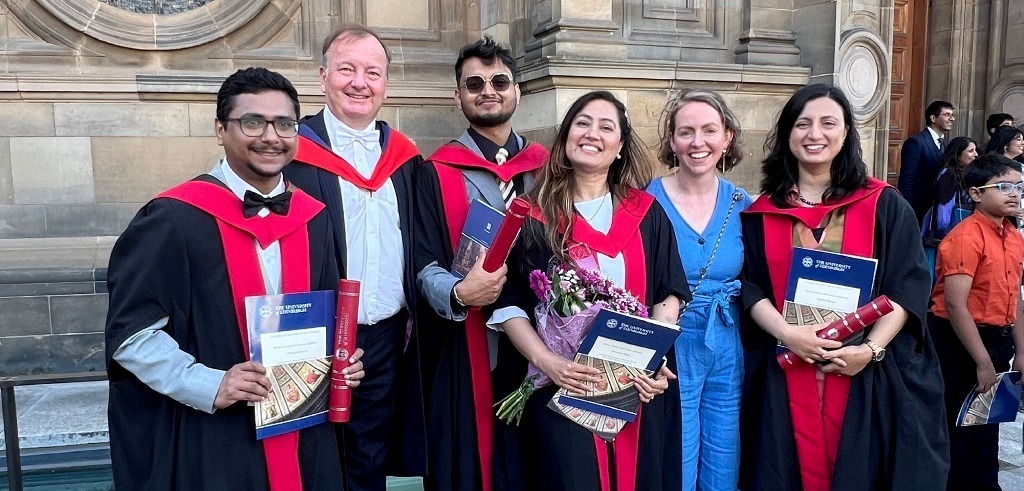
- Close
10/07/2024 |
Bridging the Gap: Research Reveals Disconnect Between Disaster Risk Management Science and Urban Planning Practices

Despite the recognized importance of Disaster Risk Management (DRM) in generating scientific data to aid urban planners and policymakers in creating safer, more resilient communities, recent research indicates that there is a significant gap between research and practice. Interviews with over a dozen practitioners revealed difficulties in applying DRM research to their work, stemming from a disconnect between the types of knowledge produced, how it is generated, and the decision-making context, as well as communication issues.
Disater Risk Management, crucial for low-risk futures.
Disaster Risk Management is an interdisciplinary field of science focused on understanding how to mitigate the impacts of natural hazards and ultimately reduce disaster risk. This field is particularly crucial in urban areas where, due to their inherent characteristics, population density is higher and, as a consequence of political decisions and urban development patterns, the risk of disaster is also significantly greater. Moreover, with increasing urbanization and limited resources, urban planning professionals and municipal authorities face mounting challenges in managing disaster risk, including risks associated with climate change-induced hazards.
Despite its importance and proven ability to produce relevant data, evidence shows that DRM knowledge does not directly translate into more effective urban planning decisions. This disconnect stems from several factors: limited engagement of urban planners and DRM professionals in research projects, issues regarding the relevance and communicated utility of research outputs, and the nature of the knowledge produced.
To shed light on this issue and provide a way forward that helps the uptake of DRM knowledge by practitioners and policymakers, researchers from the independent, global affairs think tank ODI and the University College London, just published a paper on the open source, Wiley Online Library.
The barriers to uptake of disaster risk management science in urban planning
The objectives of this study were to uncover the current constraints and identify the conditions and contexts in which DRM research can better inform and support planning decisions and practices in urban areas, thereby avoiding risk creation. The article also provides some insights on areas of good practices that are well established but not sufficient to solve the current issues and identifies four new priority areas for next-generation Disaster Risk Management and Climate Change Adaptation (CCA) science to focus on.
The research, co-authored by Prof. Mark Pelling, Director of Tomorrow’s Cities, combined literature review, expert interviews, and qualitative analysis of questionnaire results to examine the interface between DRM research and urban planning policy. Of particular relevance were the fifteen interviews conducted with senior urban planners, government stakeholders, and regional and international DRM experts. The authors selected experts with over 15 years of experience working in low- and middle-income countries and familiarity with both research methods and city-level policy processes. This approach provided a deep understanding of the challenges and opportunities in applying DRM science to urban planning decisions.

Key barriers to the uptake of DRM science in urban planning: respondents’ perspectives.
From the engagements, it became evident that there is a significant disconnect between DRM research and practitioners. The main issues highlighted were:
Superficial Coproduction: Despite the increasing use of coproduction language, urban planners perceive the actual engagement in research design and implementation to be superficial.
Disconnect Between Research and Practice: DRM science often does not address the real-world challenges faced by urban planners, such as resource limitations, changing demographics, and political instability, particularly in low- and middle-income countries. This creates a persistent gap between the priorities of researchers and those of urban planners, resulting in research outputs that often do not align with policy frameworks and planning cycles, making them impractical for use.

Methods and Tools: Urban planners are most familiar with traditional tools like hazard maps and forecasting models, rather than integrated, risk-informed decision-making tools.
Communication and Understanding: Projects such as Tomorrow’s Cities, which use a multi-hazard and systems-thinking approach, exemplify the evolving understanding of the complex and systemic nature of disasters within the DRM science community. However, interviewed practitioners were unaware of such projects, highlighting a critical need for improved communication and understanding between the science community and urban planners.


Based on this, the authors identified specific actions that can be taken to move from talking to, to working with, research end-users and enhance research impact in DRM science without compromising principles of independence and openness.
- Improving communication of scientific findings and managing expectations.
- Aligning research with policy cycles for relevance.
- Strategically positioning research to influence both DRM and urban planning.
- Advocating for early engagement in urban planning processes.

Over the years, addressing these actions has remained a primary concern for Tomorrow’s Cities. In line with this objective, the Hub’s framework for shaping future cities—the Tomorrow’s Cities Decision Support Environment (TCDSE)—integrates advanced computational modelling tools to assess the impacts of various hazards on urban infrastructure and social systems with an inclusive approach that brings together local stakeholders and policymakers from various sectors, with the aim of promoting equitable disaster risk reduction.
Deployed in full, the TCDSE not only offers cutting-edge natural hazard risk assessment, including climate change impacts, but also enhances public awareness and engagement in decision-making processes. It facilitates discussions on the trade-offs between urban growth, planning, risk, and resilience and strengthens technical capacity within local, city, and national agencies, ultimately equipping city actors with action plans that enhance institutional capability.


